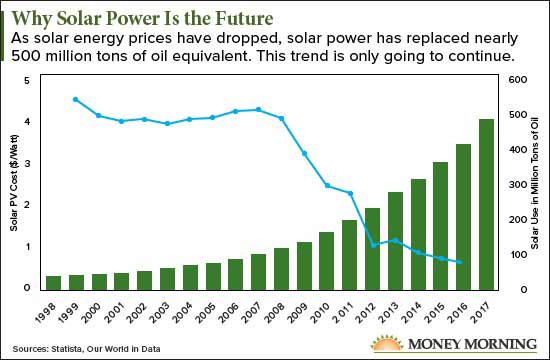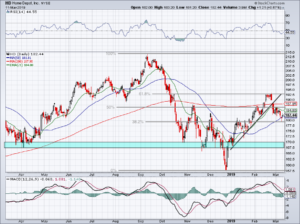When Warren Buffett, a guru I emulate on Validea, purchased his first shares of GEICO back in 1951, there were no funny commercials or talking lizard mascots to entice him. It was Buffett's limitless curiosity about the company's then-chairman Benjamin Graham—one of Buffett's professors at Columbia University as well as his mentor and "hero"--that led Buffett to visit Washington DC on a cold Saturday morning to visit what was then the General Employees Insurance Company.
After spending several hours with GEICO executive Lorimer "Davy" Davidson, Buffett's interest peaked regarding the insurance industry and GEICO's predecessor in particular. In fact, the company was one of Buffett's earliest investments—he purchased 350 shares at a multiple of about 8 times earnings. Given the market PE at the time (around 15), that was a good deal, but a steal given the current market PE of 24.
Today's robust market includes few companies with low P/E ratios, but there are some. In fact, one of the stock screening models I created for Validea was inspired by the legendary investor John Neff, who managed Vanguard's Windsor Fund from 1964 to 1995. For Neff, the P/E ratio (a stock's per-share price divided by per-share earnings) was also a measure of what level of growth investors are expecting from a company in the future. The expectation factor was paramount for Neff, who found that high-flying growth stocks with high P/Es were very sensitive to any disappointment compared to expectations. Low P/E stocks, he found, had fewer expectations built into their pricing, so there was substantial upside if performance beat expectations but little downside if the opposite occurred—since Wall Street had already written them off. According to Neff, "If you buy stocks when they are out of favor and unloved, and sell them into strength when other investors recognize their merits, you'll often go home with handsome gains."
Top 5 Warren Buffett Stocks To Invest In 2019: CVR Partners LP(UAN)
Advisors' Opinion:- [By Stephan Byrd]
Get a free copy of the Zacks research report on CVR Partners (UAN)
For more information about research offerings from Zacks Investment Research, visit Zacks.com
- [By Shane Hupp]
Get a free copy of the Zacks research report on CVR Partners (UAN)
For more information about research offerings from Zacks Investment Research, visit Zacks.com
- [By Joseph Griffin]
CVR Partners (NYSE: UAN) and PotashCorp (NYSE:NTR) are both basic materials companies, but which is the superior stock? We will contrast the two companies based on the strength of their profitability, valuation, risk, dividends, institutional ownership, analyst recommendations and earnings.
Top 5 Warren Buffett Stocks To Invest In 2019: Orbital ATK, Inc.(OA)
Advisors' Opinion:- [By Ethan Ryder]
Mount Yale Investment Advisors LLC acquired a new position in shares of Orbital ATK (NYSE:OA) during the first quarter, according to the company in its most recent Form 13F filing with the Securities and Exchange Commission. The institutional investor acquired 1,344 shares of the aerospace company’s stock, valued at approximately $178,000.
- [By Rich Smith]
So who will get the loot? Believe it or not, more than half the House's increase in funding (a $459 million increase compared to fiscal 2018) is going to science programs -- $6.7 billion in total. And while the bill is short of specifics, this is money investors can probably expect will be going to satellite makers such as Boeing (NYSE:BA) and Lockheed Martin (NYSE:LMT), Northrop Grumman (NYSE:OA), and Maxar Technologies (NYSE:MAXR), also to satellite launchers such as SpaceX, and Boeing and Lockheed's United Launch Alliance.
- [By Rich Smith]
For the past three years, space company Orbital ATK (NYSE:OA) has been working with the U.S. Air Force to develop a new heavy launch rocket. As USAF envisions it, Orbital's new rocket would work alongside existing Delta IV Heavies (operated by Boeing and Lockheed Martin joint venture United Launch Alliance) and soon, the Falcon Heavy rockets that SpaceX began launching in February, giving the Air Force the option of choosing among three competing launch systems for the best combination of price and reliability.
- [By Garrett Baldwin] Markets are cheering a major development in efforts to fix the ongoing trade conflict between the United States and China. According to Reuters, Chinese telecom giant ZTE has signed an agreement to get back into business with its American partners. The agreement will lift a ban by the U.S. Commerce Department that prevented China's No. 2 telecommunications equipment from buying from U.S. suppliers. This is a major development, and one that signals progress among trade officials from both nations. There are now more job openings in the United States than available workers. This is the first time that the Department of Labor has documented this phenomenon. There are 6.7 million openings compared to the 6.4 million workers available to fill those positions. As a result, U.S. companies have been forced to increase compensation in order to attract talent. All of the positive economic development could come to a screeching halt should the U.S. experience the largest labor strike in a decade. Reports indicate that the Teamsters and the United Parcel Service (NYSE: UPS) are on a collision course that could result in a general strike. The union has announced that 260,000 UPS employees have authorized a strike should both sides fail to reach a labor deal by August 1. UPS is responsible for the transport of 6% of the nation's gross domestic product. Three Stocks to Watch Today: TSLA, NOG, WFC Tesla Inc. (Nasdaq: TSLA) investors remain committed to giving Chairman Elon Musk more of their money. On Tuesday, shareholders struck down proposals that would have removed Musk from the chairman role and shaken up the board of directors. Both proposals failed. At the same shareholder event, Musk announced plans for Tesla to open a production facility in Shanghai and projected that his firm will likely produce 5,000 Model 3 vehicles per week by the end of June. In deal news, defense contractor Northrop Grumman (NYSE: NOG) has won U.S. antitrust approval to purchase rocket moto
- [By Max Byerly]
Orbital ATK (NYSE:OA) has been assigned a consensus recommendation of “Hold” from the thirteen ratings firms that are covering the firm, MarketBeat.com reports. Nine research analysts have rated the stock with a hold rating and three have issued a buy rating on the company. The average 1-year price target among brokers that have covered the stock in the last year is $129.50.
Top 5 Warren Buffett Stocks To Invest In 2019: Peapack-Gladstone Financial Corporation(PGC)
Advisors' Opinion:- [By Shane Hupp]
Plato Gold Corp (CVE:PGC) insider Greg Ka Wai Wong acquired 1,125,000 shares of Plato Gold stock in a transaction dated Wednesday, August 8th. The shares were acquired at an average cost of C$0.06 per share, with a total value of C$67,500.00.
- [By Shane Hupp]
Bank of N.T. Butterfield & Son (NYSE: NTB) and Peapack-Gladstone Financial Co. Common Stock (NASDAQ:PGC) are both finance companies, but which is the superior investment? We will compare the two companies based on the strength of their profitability, earnings, risk, institutional ownership, valuation, analyst recommendations and dividends.
- [By Ethan Ryder]
Get a free copy of the Zacks research report on Peapack-Gladstone Financial Co. Common Stock (PGC)
For more information about research offerings from Zacks Investment Research, visit Zacks.com
- [By Stephan Byrd]
Thrivent Financial for Lutherans lifted its position in shares of Peapack-Gladstone Financial Co. Common Stock (NASDAQ:PGC) by 16.3% in the first quarter, according to its most recent 13F filing with the SEC. The firm owned 48,531 shares of the financial services provider’s stock after purchasing an additional 6,789 shares during the quarter. Thrivent Financial for Lutherans owned about 0.26% of Peapack-Gladstone Financial Co. Common Stock worth $1,621,000 as of its most recent filing with the SEC.
Top 5 Warren Buffett Stocks To Invest In 2019: MER Telemanagement Solutions Ltd.(MTSL)
Advisors' Opinion:- [By Alexander Bird]
Here are the top performers from last week…
Penny Stock Current Share Price Last Week's Gain Staffing 360 Solutions Inc. (Nasdaq: STAF) $2.58 96.35% IZEA Inc. (Nasdaq: IZEA) $1.65 85.19% ShiftPixy Inc. (Nasdaq: PIXY) $3.35 78.38% MER Telemanagement Solutions Ltd. (Nasdaq: MTSL) $3.31 41.07% IsoRay Inc. (NYSE: ISR) $0.60 38.64% TransGlobe Energy Corp. (Nasdaq: TGA) $3.74 37.76% Actinium Pharmaceuticals Inc. (OTCMKTS: ATNM) $0.27 26.31% Blonder Tongue Labs Inc. (NYSE: BDR) $1.56 24.58% Bridgeline Digital Inc. (Nasdaq: BLIN) $1.51 24.51% Cel-Sci Corp. (NYSE: CVM) $0.91 24.03%While these penny stocks generated strong returns last week, they're unlikely to produce the same level of profit again anytime soon.
- [By Stephan Byrd]
News stories about MER Telemanagement Solutions (NASDAQ:MTSL) have trended somewhat positive on Sunday, according to Accern. The research group identifies negative and positive news coverage by reviewing more than 20 million news and blog sources in real time. Accern ranks coverage of companies on a scale of negative one to positive one, with scores closest to one being the most favorable. MER Telemanagement Solutions earned a media sentiment score of 0.12 on Accern’s scale. Accern also assigned news articles about the technology company an impact score of 45.5243579518781 out of 100, meaning that recent news coverage is somewhat unlikely to have an effect on the company’s share price in the immediate future.
Top 5 Warren Buffett Stocks To Invest In 2019: DigitalGlobe, Inc(DGI)
Advisors' Opinion:- [By Ethan Ryder]
COPYRIGHT VIOLATION WARNING: “DigitalGlobe (DGI) Earning Somewhat Positive Press Coverage, Report Shows” was published by Ticker Report and is owned by of Ticker Report. If you are accessing this piece on another domain, it was stolen and republished in violation of US & international copyright & trademark laws. The original version of this piece can be read at https://www.tickerreport.com/banking-finance/3360325/digitalglobe-dgi-earning-somewhat-positive-press-coverage-report-shows.html.
 Money Morning Special Situation Strategist Tim Melvin has laid out the reasons why the federal legalization of weed is likely to happen by next year.
Money Morning Special Situation Strategist Tim Melvin has laid out the reasons why the federal legalization of weed is likely to happen by next year. Don't look now, but the alternative energy market has changed dramatically.
Don't look now, but the alternative energy market has changed dramatically.
 system is well aware of this.
system is well aware of this.
 Pigeoncoin (CURRENCY:PGN) traded 7.1% lower against the dollar during the one day period ending at 17:00 PM ET on March 14th. One Pigeoncoin coin can currently be bought for $0.0002 or 0.00000004 BTC on major exchanges including CryptoBridge and QBTC. Over the last seven days, Pigeoncoin has traded up 139.6% against the dollar. Pigeoncoin has a total market cap of $357,427.00 and approximately $11,324.00 worth of Pigeoncoin was traded on exchanges in the last 24 hours.
Pigeoncoin (CURRENCY:PGN) traded 7.1% lower against the dollar during the one day period ending at 17:00 PM ET on March 14th. One Pigeoncoin coin can currently be bought for $0.0002 or 0.00000004 BTC on major exchanges including CryptoBridge and QBTC. Over the last seven days, Pigeoncoin has traded up 139.6% against the dollar. Pigeoncoin has a total market cap of $357,427.00 and approximately $11,324.00 worth of Pigeoncoin was traded on exchanges in the last 24 hours. 
 Source: Shutterstock
Source: Shutterstock 
 Zacks Investment Research downgraded shares of Wave Life Sciences (NASDAQ:WVE) from a hold rating to a sell rating in a research report report published on Saturday.
Zacks Investment Research downgraded shares of Wave Life Sciences (NASDAQ:WVE) from a hold rating to a sell rating in a research report report published on Saturday. 
 What is Softbank? 7:00 AM ET Tue, 19 Feb 2019 | 03:51
What is Softbank? 7:00 AM ET Tue, 19 Feb 2019 | 03:51